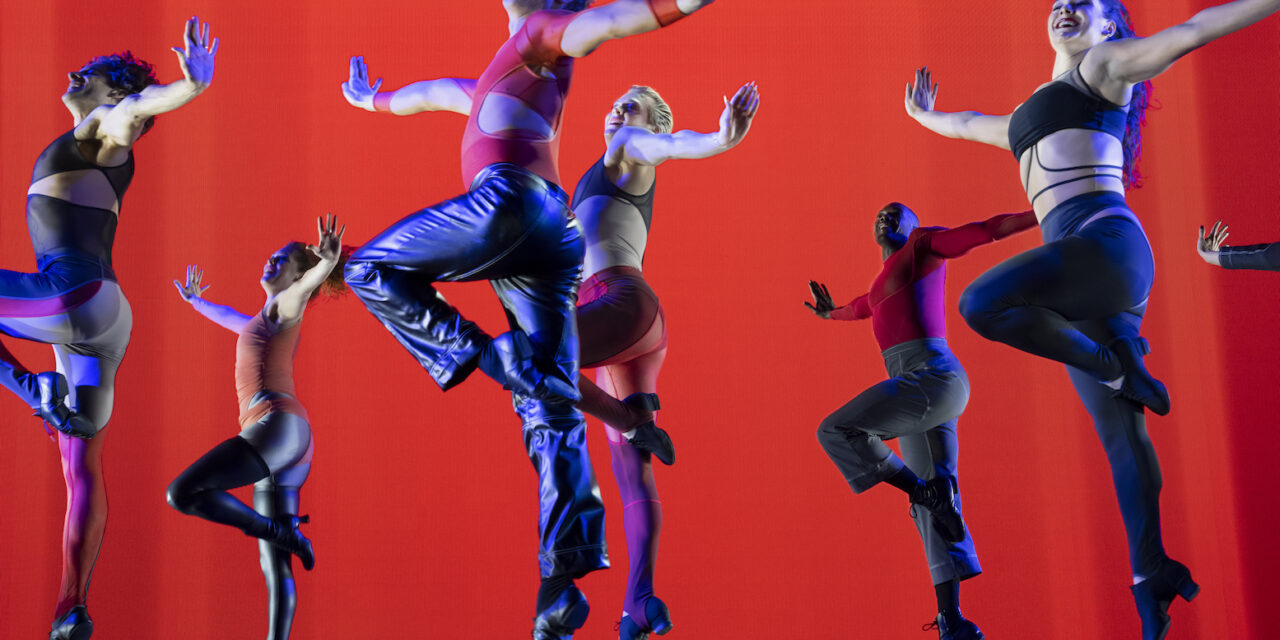By Carole Di Tosti . . .
For those who missed the original 1978 production of Bob Fosse’s Dancin’, the Fates are kind. The gobsmacking revival directed by Wayne Cilento is currently running at the Music Box Theatre in glorious, eye-popping color and majesty. It is a thrilling tribute to the legendary dancer/director/choreographer who died in 1987. The two-hour, twenty-minute production is an exaltation of the artistry of dance. Fosse assiduously reinforced dance as art. Cilento’s exceptional reimagining manifests how Fosse stylized the art form toward an apotheosis of vibrance, sexiness, rigor and grace.
Known for his accomplishments in direction and musical staging (he’s a Tony, Drama Desk and Fred Astaire Award winner), Cilento is qualified to introduce a new generation of audiences to Fosse’s genius talent. Cilento performed in the ensemble of the original 1978 production and worked with Fosse on Big Deal in 1986. In this remarkable, many-hued update of mesmerizing sight and sound, he presents Fosse’s indelible contributions to the art form by using all areas of entertainment that Fosse loved and worked in—theater, film, television.
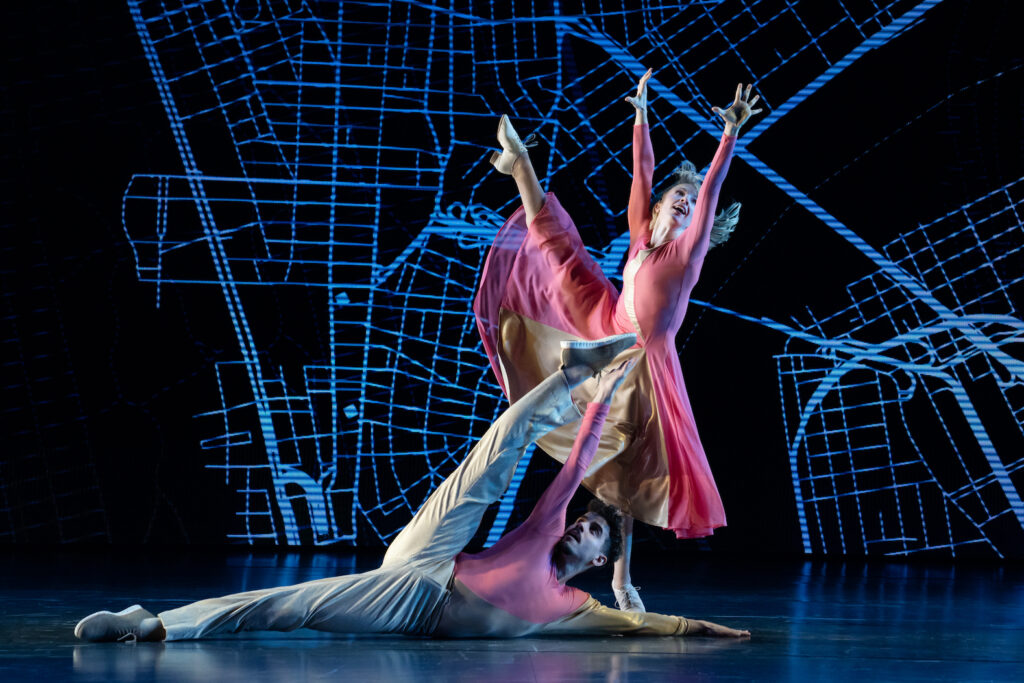
DANCIN’ features the original choreography, reproduced by Christine Colby Jacques who collaborated with associate director and musical stager Corinne McFadden Herrera. Jacques, like Cilento, was a performer in the 1978 production, as was Kirsten Childs, who makes the script current for today’s audiences.
Most important are the 16 incredible dancers whose balletic skills, energy and rigorously trained physicality achieve Fosse’s perfectionism with seeming ease (there are actually 22 dancers in the cast). Boasting powerful voices, they represent the hottest talent on Broadway. An accumulation of prodigious credits back their every gyration, spin, twitch, leap or sinewy, graceful thrust of their arms, legs, neck, or flexible wrists and fingers for those characteristic Fosse hand moves.
At the top of this amazing production, the Renaissance performer (exceptional acting, singing, dancing) Manuel Herrera introduces us to Fosse’s extraordinary conception in the prologue. He jests, ironically, that this show is an almost plotless musical, with “no villains, no baritone heroes, no orphanages, no Christmas trees, no messages.” Herrera intones that what we will see is dancin’ and singing and more dancin’. Then he welcomes the audience as “honored guests of all genders.”
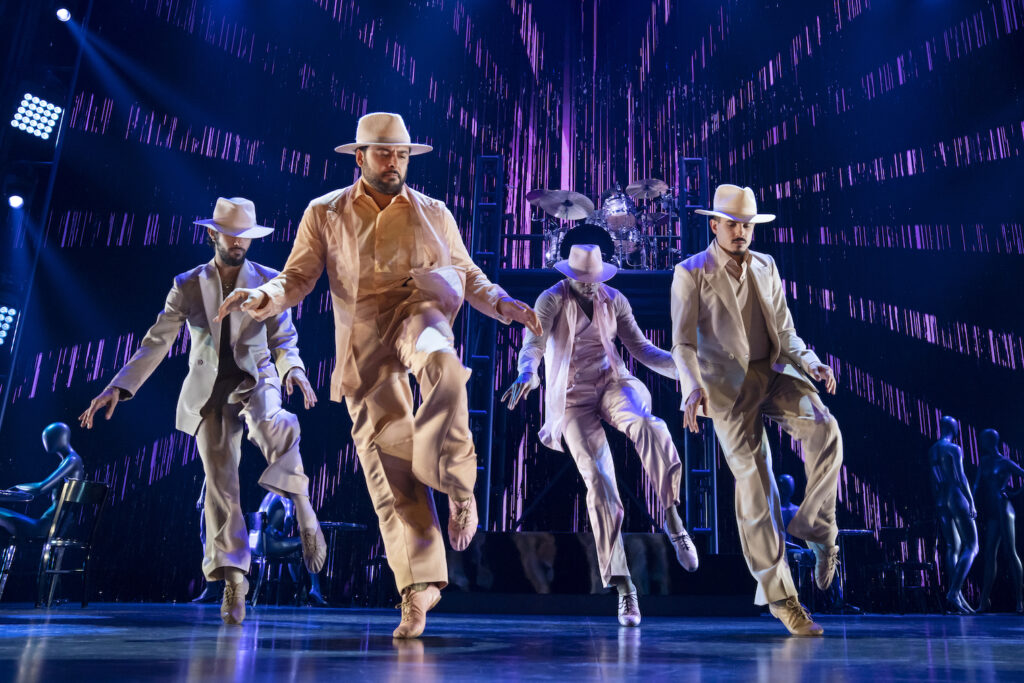

His updated reference with this welcome puts the audience in a vibe of expectation to experience this maverick musical of vignettes absent narrative, though there is sporadic dialogue. Each vignette features a dance form—from tap, to modern, to more classical moves, to jazz—and in the “America?” segment, regimental marching with a twist, Fosse-style.
The opening number, “Crunchy Granola, Suite” (Neil Diamond) dazzles, as the audience’s senses are overcome watching the vibrant, cool, colorful, body-hugging, spandex costumes that sexily reveal diesel midriffs and muscle-rippling backs of astoundingly gorgeous bodies in back-bending movements or vaulting, leg-split-leaps against a floor to ceiling video wall (Robert Brill set design) which cycles rainbow-colored projections, color-coordinated with the costumes (Reid Bartelme and Harriet Jung).
It’s a fabulous, breathtaking opener, followed by the softness of nostalgia in another tribute to iconic influencers in dance history. These are introduced by a film clip of African American dancers (Nicholas brothers, Hines brothers. Savion Glover), then the man himself: Bill Bojangles Robinson. This Bojangles section initially features Yeman Brown as Bill Robinson’s representative, reciting Langston Hughes’ poem “I, too, sing America,” from an erector set—wall-to-ceiling scaffolding—thanks to Robert Brill’s scenic design, which flanks center stage on both sides.
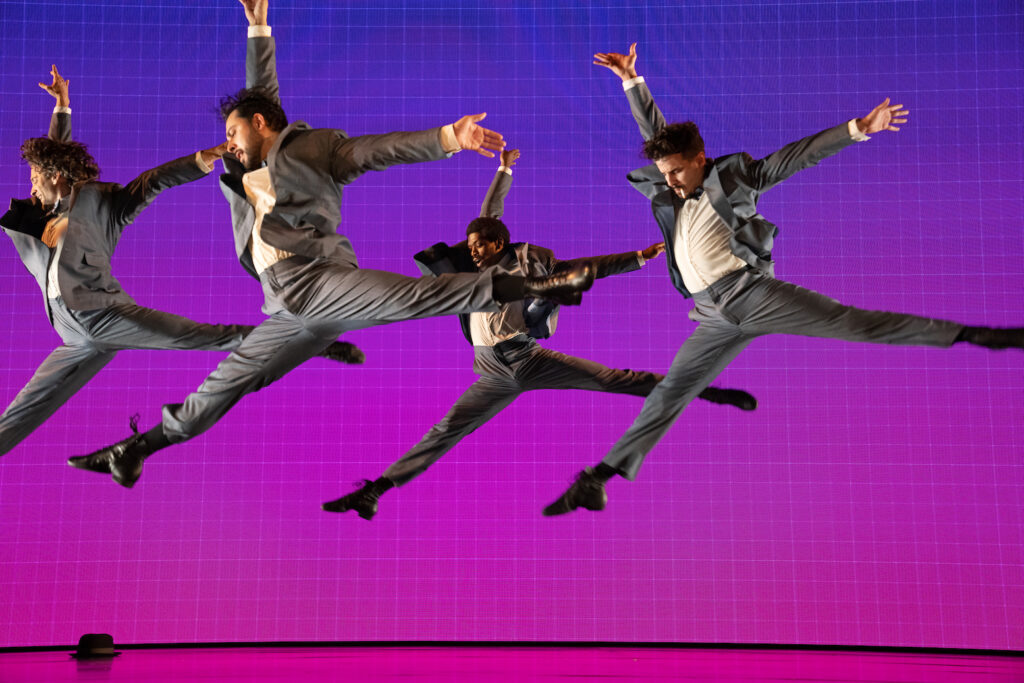

After Brown’s recitation, Jacob Guzman (as William Jefferson Williams) and Manuel Herrera (as the singer) briefly quip about how they got to the jail cell-like setting. Herrera sings powerfully, accompanied with languid moves, completing Jerry Walker’s “Mr. Bojangles.”
The Bojangles number brought down the house, as do most of the numbers in Dancin’ because the audience is becoming enlightened and enamored of Fosse’s most ingenious choreography. A four-part percussion segment entitled “Percussion,” crescendos and finishes with Ron Todorowski’s high-powered solo.
“Big City Mime,” which includes Big Spender from Fosse’s Sweet Charity, focuses on Cyril (the fabulous Peter John Cursin) as it tells a tale of New York City seduction without verbal cues. Chursin’s Cyril takes a frenetic and fantastic journey—against projections of the city grid—to the shimmering “Pompeii Club” and so much more, in one of the longest, most imaginative of numbers, which features Kolton Krouse’s memorable “Spring Chicken.”
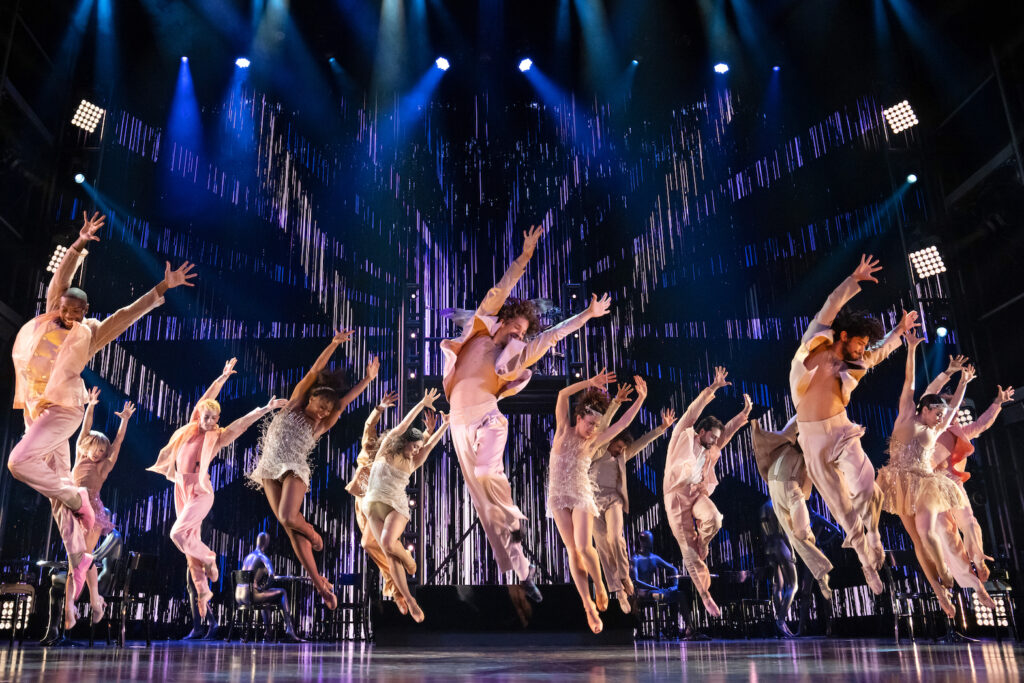

At the end of Act I and the beginning of Act II are numbers that also bring down the house. In “Dancin’ Man,” a tribute to Fred Astaire, the company, in top hats, recreates the characteristic Hollywood musical. In “Benny’s Number” (Louis Prima’s “Sing, Sing, Sing”) the dancers take on the trombone, trumpet, clarinet and piano solos. Staged above the fray, a drummer drums on his full kit like no tomorrow, beating the rhythms in a wild syncopation of the triumph of the dance.
Robert Brill’s scenic design, Finn Ross’ video design, David Grill’s lighting design and Peter Hylenski’s sound design (I heard every word) are the extraordinary companion integrations of Fosse’s vision and Cilento’s reimagining. The beauty, dynamism, and spectacle of the sixteen dancers who appear in synchronicity with the visual pageantry and epiphany of Jim Abbott’s orchestrations and music, which they explore kinetically during the various numbers, defies description.
Bob Fosse’s Dancin’. Through September 17 at The Music Box Theatre (239 West 45th Street, between Broadway and Eighth Avenue). Two hours, twenty minutes with one intermission. www.dancinbway.com
Photos: Julieta Cervantes


